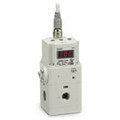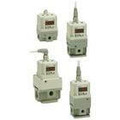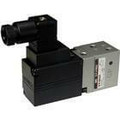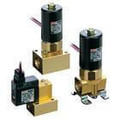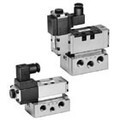Electronic pressure regulators are vital components in airline equipment, providing precise control and maintenance of desired pressure levels within a system.
Employing advanced electronic sensors and controllers, they efficiently regulate fluid or gas flow for accurate pressure management, outperforming their mechanical counterparts by eliminating the reliance on springs or diaphragms. These regulators excel in diverse industries such as industrial manufacturing, automotive, aerospace, and medical devices, offering enhanced response times, superior accuracy, and remote programmability.
Types of Electronic Pressure Regulators
Digital Electronic Pressure Regulators: These utilize microprocessors for pressure control, allowing for multiple setpoints and options like PID control for increased precision.
Proportional Electronic Pressure Regulators: Like the SMC ITV 1010-33T 1N 1000, these use proportional solenoid valves for dynamic pressure adjustment, ideal for pneumatic automation and robotics.
Piezoelectric Pressure Regulators: Leveraging piezoelectric crystals, these regulators deliver precise pressure control, suitable for applications requiring exact pressure adjustments.
Vacuum Electronic Pressure Regulators: Models such as SMC ITV 2090-2125N5-Q maintain desired vacuum levels in applications like semiconductor manufacturing, using electronic sensors and valves.
High-Pressure Electronic Regulators: Designed for high-pressure scenarios, such as oil and gas exploration, these regulators, including the SMC ITVH2020-03N2CL4, utilize robust materials and advanced sensors to handle extreme conditions.
Series Descriptions
ITVX: The ITVX2000 series offers seamless air pressure control via electrical signals with a digital pressure display, operating at a maximum supply pressure of 5.0 MPa and low power consumption.
ITV: Featuring electro-pneumatic and vacuum regulation, the ITV series offers lightweight design with an LED display, providing either analog or switch output.
VY1: This hybrid regulator combines a regulator and solenoid valve, offering a significant area coverage and simple handling with a built-in amplifier requiring minimal external connections.
IT: With variations for each flow rate, the IT series includes monitor output and shock resistance, designed for robust management of airflow.
IC: The IC series controller converts digital input into analog output, featuring a 10-bit parallel input suitable for use with ITV0000 series.
PVQ: Designed for low leakage, the compact PVQ series is utilized in applications like air blow and cooling systems, with a direct poppet construction.
VEF/VEP: These proportional control valves offer infinite control of flow or pressure, with VEP focusing on pressure and VEF on airflow regulation via solenoid current.
VER: The VER series enables stepless pressure control and cylinder actuation through electric signals, with options for varying port sizes and thread types.
Electronic Pressure Regulators FAQs
What is an Electronic Pressure Regulator?
An electronic pressure regulator is a device used to precisely control the pressure of a gas or liquid within a system using electronic controls for adjustments and monitoring.
How do Electronic Pressure Regulators work?
These regulators use electronic signals to adjust the pressure setting, which controls a valve to maintain the desired output pressure level, ensuring accurate and stable pressure control.
What are the benefits of using Electronic Pressure Regulators?
Electronic pressure regulators offer precise pressure control, quick response times, improved stability, and the ability to integrate with automated systems for enhanced process efficiency.
What applications are suitable for Electronic Pressure Regulators?
They are ideal for applications requiring precise pressure control, such as in industrial automation, laboratory settings, pneumatic systems, and process control environments.
Can Electronic Pressure Regulators handle various types of gases and liquids?
Yes, electronic pressure regulators are designed to manage a wide range of gases and liquids, provided they are compatible with the materials used in the regulator's construction.
What should I consider when selecting an Electronic Pressure Regulator?
Consider factors such as pressure range, compatibility with the media (gas or liquid), required accuracy, response time, and integration needs with your existing control systems.
How do I maintain an Electronic Pressure Regulator?
Regular maintenance involves checking for leaks, ensuring electrical connections are secure, and cleaning components per the manufacturer's guidelines to ensure optimal performance.
Are these regulators compatible with existing pneumatic systems?
Yes, electronic pressure regulators are designed to integrate easily with existing pneumatic systems, offering enhanced control and operational efficiency.
What safety precautions should be taken with Electronic Pressure Regulators?
Ensure the regulator is correctly installed and compatible with your system's media. Regular inspections for any signs of wear or damage and adherence to the manufacturer's guidelines are also essential for safe operation.

